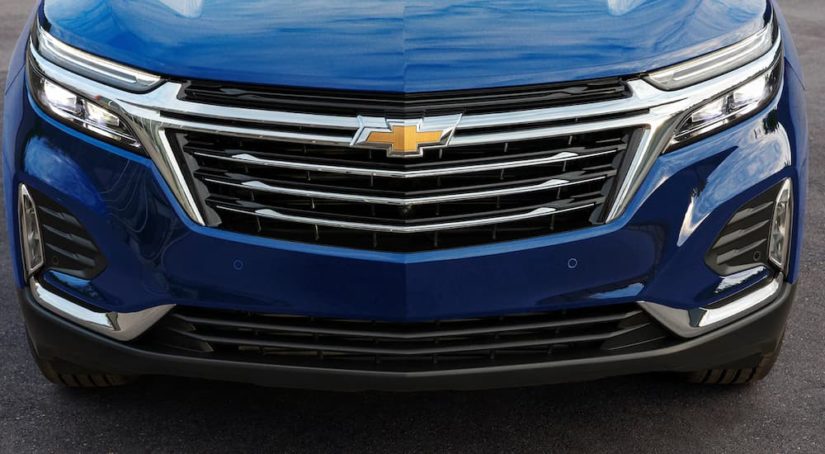Chevrolet makes some of the most reliable vehicles that are known for incredible resale value, and thanks to a diverse lineup with excellent pickups, SUVs, sedans, electric cars, and more, there’s something for everyone in the Chevy lineup. Still, when shopping for any used car, it’s normal to wonder if you’ll have the same protections that would come with a new car. Because used cars have had previous owners and a whole life before you get to them, it’s only natural to want to ensure that you’d be covered if any issues arise. So when you’re shopping at your local used Chevrolet dealer, you might ask what sorts of warranties and coverages are offered.
There are two common ways you can receive protection for your used Chevy. One is if the original warranty on the car (purchased by the previous owner) gets transferred to you. The second is buying a Certified Pre-Owned (CPO) Chevy, which will come with its own warranties and coverage. To help you understand the differences between the two and the perks of both, here’s a look at transferred warranties versus CPO coverage. They are distinctly different, and getting a good understanding of them can help you assess whether or not a certain used Chevy you’ve found is a “good deal” or if you want to add other coverage.

A Chevy Transferable Warranty
Chevrolet announced that all passenger cars, light-duty trucks, SUVs, and crossovers made in or after 2016 come with a 5-year/60,000-mile transferable Limited Powertrain Warranty. This warranty covers the repairs to all parts involved in making the vehicle move. That will include labor and parts. It applies specifically to defects in the original materials or workmanship of the vehicle, so it won’t apply to issues that come up after you get in an accident, fender bender, or flood.
This warranty will cover the engine, including the gaskets, internal electrical components, oil pump, manifolds, and other engine parts. It will also cover the transmission and transfer case and its components, such as the gaskets, seals, and lubricated parts. It will additionally cover the drive systems like the bearings, axle shafts, and bearings. It is important to note that some parts will not be covered, including the wiring, radiators, hoses, coolant, and sensors. Chevy published a full list of uncovered parts in this warranty. It’s important to familiarize yourself with those.
If you purchase a used Chevy that is less than five years old or has not reached that 60,000-mile mark, the new vehicle warranty will still be active and is transferable to you. Because warranties are typically associated with a vehicle’s VIN number and not the vehicle owner, this transfer will be automatic. (PS, you can log onto Chevy.com and check your warranty status at any time.)
The powertrain warranty isn’t the only transferable warranty. Buyers can choose to purchase a vehicle service contract, otherwise known as a protection plan. It covers the failure of certain components and lasts for up to eight years or 100,000 miles. This warranty can also be transferred to a second owner. However, if you are the second buyer, ask if this warranty is still in force, as the original buyer does have the option to cancel it at any time.
So that’s what you need to know if you are buying a used, but not a Certified Pre-Owned, Chevy. The included limited powertrain warranty should be in effect if the vehicle is less than five years old or has less than 60,000 miles on it. And if the first owner purchased a protection plan, this could still be in effect if the car is less than eight years old or has less than 100,000 miles on it and if the first buyer did not cancel it.
The Benefits of a Certified Pre-Owned Chevy Vehicle
Now moving on to Certified Pre-Owned Chevys. These come with slightly different benefits than the transferable warranties of used Chevrolets. Note that these benefits apply only to Chevy’s CPO program, not a dealership CPO program. Ask your used Chevy dealership which CPO program their CPO vehicles are under.
When you purchase a Certified Pre-Owned Chevy, you will get peace of mind knowing that it’s been thoroughly inspected, met rigorous standards, and comes with special coverage. If a Chevy has the CPO badge, it is within six model years and has no more than 75,000 miles on it. (Note, the transferable powertrain warranties on regular used Chevys are ineffective after five years or 60,000 miles, so you already get longer coverage with a CPO vehicle).
These vehicles have gone through a 172-point inspection along with what Chevy calls a “reconditioning process.” Additionally, the dealer has already checked for and addressed any safety recalls on the vehicle before listing it for sale. And the best part is that it must have a clean record. So that’s how a CPO vehicle qualifies for the CPO label. Now let’s talk about the warranties that come with it.
You will get two factory-backed warranties with a CPO Chevy. These will include a 6-year/100,000-mile powertrain limited warranty, as well as a 12-month/12,000-mile bumper-to-bumper limited warranty. There is no deductible, so you can access this coverage right away should something come up. Here’s where the CPO benefits outweigh a regular used Chevy model: in addition to the generous warranties, you also get 24/7 roadside assistance and courtesy transportation for the duration of the powertrain limited warranty. So if you need to get your car towed or it gets tied up in the shop for days, you’ll have a way to get around, and it won’t cost you an arm and a leg.

So What’s Better: A Transferable Warranty or a CPO Vehicle?
Ultimately, you’ll get far more coverage with a CPO vehicle compared to a standard used Chevy. Remember that the original warranty on a new Chevy lasts just five years or 60,000 miles. That means that if you buy that car at the three-year or 36,000-mile mark, you only have two more years or 24,000 more miles to enjoy the warranty.
On the other hand, when you purchase a CPO Chevy, your warranties start fresh. So you will enjoy a full six years or 100,000 miles of coverage on the powertrain and another 12-month or 12,000-mile bumper-to-bumper warranty. You don’t need to worry about the overall age of the vehicle impacting the length of your coverage. These are fresh warranties that don’t go into effect until you buy the CPO vehicle. Plus, you will know that a CPO vehicle has a clean record, which reduces the chances you will even need to take advantage of those warranties. A standard used car could have a more colorful past. You’ll want to ask for the CARFAX report to understand what it’s been through.
Of course, you do have the freedom to purchase an extended warranty if you’re buying a used car and the original warranty has already expired. Or, you can use the fact that you’ll need to do so in your negotiations. Just make sure to research any third-party extended warranty companies to ensure they pay up on claims and don’t have hidden and extensive limitations.



